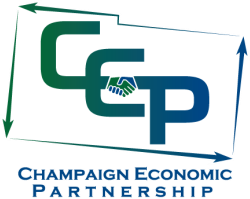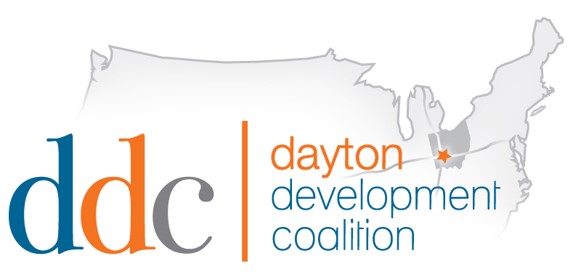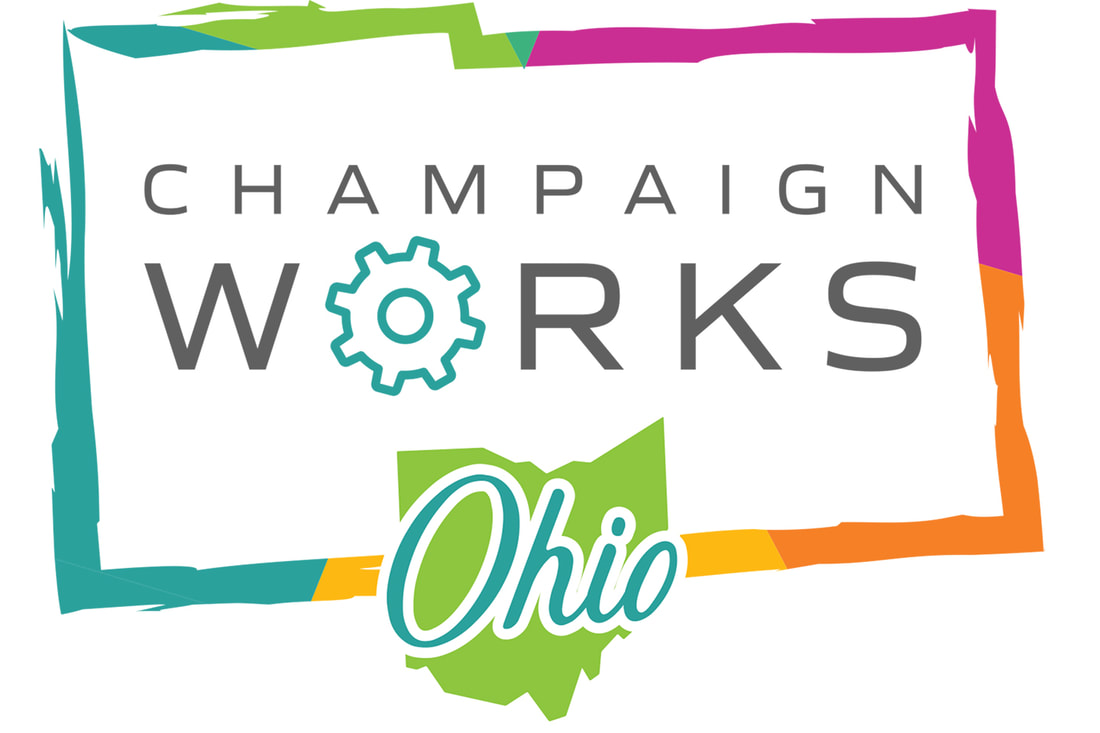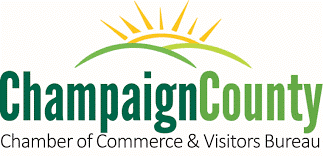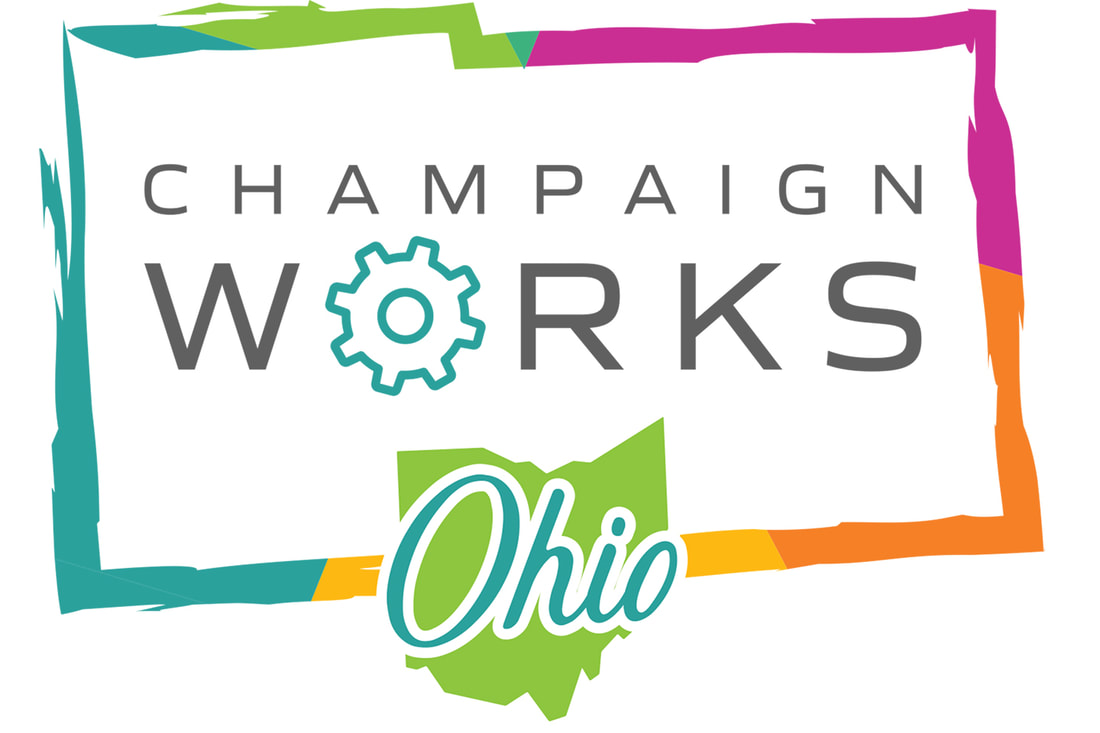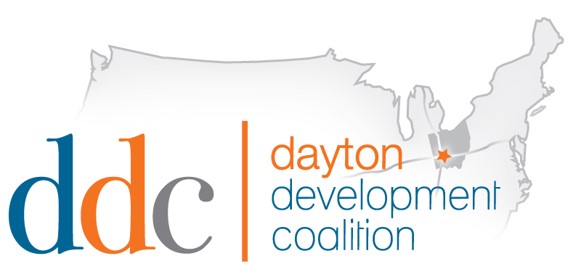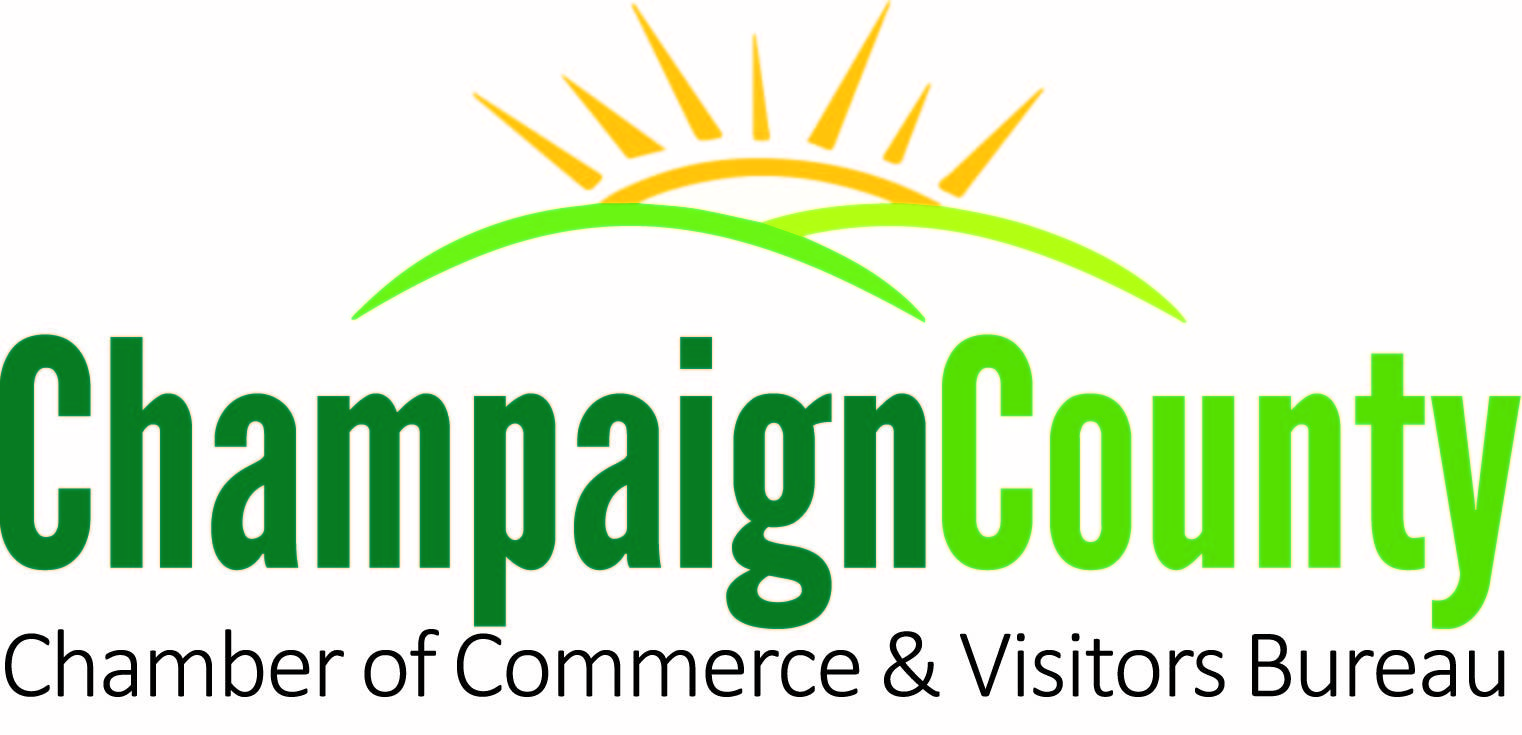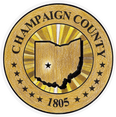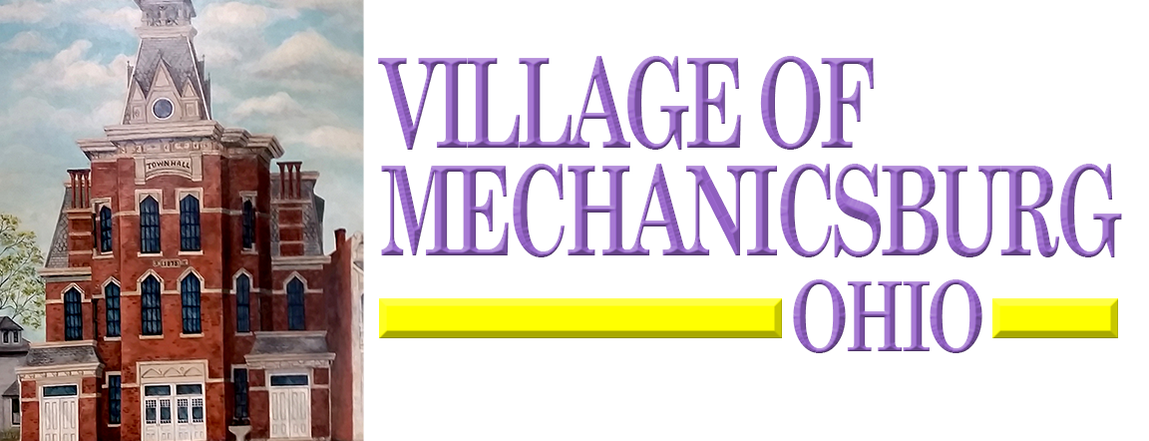Want to Start a Business in Champaign County?
|
|
Doing Business in Champaign County? Start Here!
Starting, sustaining and growing a business takes significant time, effort and attention to detail. The Champaign Economic Partnership is here to guide you each step of the way – to help make your journey successful and as smooth as possible. Follow the CEP Business PlaybookClick the links below to explore key elements in starting a business, or download a PDF of the CEP Business Playbook.
|
Then contact us at the Champaign Economic Partnership. We’re ready to listen and work with you to achieve your specific goals. And we’ll give you the advantage of our partnerships with local, regional and state resources – to bring your plans to reality. We’re here to help you succeed in Champaign County! Call us today. Or shoot us an email.
Write a Business Plan
Why write a business plan? First, to prove to yourself that your business concept has great potential for success. Then, to convince lenders, investors, and potential partners and employees that your new venture deserves their support – with a level of risk they can comfortably live with.
A business plan, based on solid analysis of the market and other considerations, serves as a blueprint that increases your new business’s chances of success. It’s an essential step in deciding whether to start a business – and how.
A business plan consists of the following:
Executive Summary: Two pages at most, this summary offers the reader a quick introduction to your business – and why it will work. Information to include here: your products and/or services and why consumers will want them, your mission statement, basics about your leadership team, where your business is or will be located (physical and/or online address), financial information and a high-level forecast of your business’s future.
Business Description: Expand on a description of your purpose, products and services. For instance, who is in your target market and how will you solve their problems and needs? Be sure to include what sets your business apart from other players in your market segment. Perhaps you have an industry expert or two on your team. Or you’ve developed a patented process or product – or have created a service unique to the local market. Also cover the timeline for launching your business, if you’re not already in operation.
Market Analysis: Here you’ll prove that you’ve done your homework. This includes identifying and describing your potential competitors, their strengths, and how they serve customers. You’ll also determine if there is unmet demand in the market for your type of service or product and how you’ll differentiate your business in the market to win over and retain customers.
Organization and Management: You’ll describe the legal structure of your business, provide an organizational chart and explain the roles, experience and qualifications of members of your leadership team – and how they’ll contribute to business success. You could include resumes of key team members.
Service or Product Line: Provide a more detailed description of your services and/or products and how they will benefit customers. Again, describe how they differ from products or services already in the market and how they uniquely solve customers’ problems.
Marketing and Sales: Describe here your strategies to attract and retain customers. Also describe the process of making a sale, who will be involved and how you will monitor and adjust your marketing strategies to meet challenges of a changing marketplace, technology and other factors that could impact sales.
Financial Projections: If your business is already in operation provide income statements, balance sheets and cash flow statements for the last three to five years. Also provide a five-year financial projection, including sales projections, a break-even analysis, projected income statements, cash flow, balance sheets and capital expenditure budgets. Also list collateral to put against a loan.
Funding Request: The financial projections you provide will support your request for a loan or other funding. In this section, you’ll state how much money you will need, the period your request will cover, and how you will use the money (for instance, equipment, materials, salaries or other needs). Also describe your future financial plans and how you’ll pay off the debt.
Appendix: This includes supporting documents to help make the case for your business. Common documents for this section include credit histories, resumes, letters of incorporation, trademark registrations, partnership agreements, product pictures, letters of reference, licenses, permits, legal documents and other contracts.
Who can help you write a business plan?
A business plan, based on solid analysis of the market and other considerations, serves as a blueprint that increases your new business’s chances of success. It’s an essential step in deciding whether to start a business – and how.
A business plan consists of the following:
- Executive Summary
- Business Description
- Market Analysis
- Organization and Management
- Service or Product Line
- Marketing and Sales
- Financial Projections
- Funding Request
- Appendix
Executive Summary: Two pages at most, this summary offers the reader a quick introduction to your business – and why it will work. Information to include here: your products and/or services and why consumers will want them, your mission statement, basics about your leadership team, where your business is or will be located (physical and/or online address), financial information and a high-level forecast of your business’s future.
Business Description: Expand on a description of your purpose, products and services. For instance, who is in your target market and how will you solve their problems and needs? Be sure to include what sets your business apart from other players in your market segment. Perhaps you have an industry expert or two on your team. Or you’ve developed a patented process or product – or have created a service unique to the local market. Also cover the timeline for launching your business, if you’re not already in operation.
Market Analysis: Here you’ll prove that you’ve done your homework. This includes identifying and describing your potential competitors, their strengths, and how they serve customers. You’ll also determine if there is unmet demand in the market for your type of service or product and how you’ll differentiate your business in the market to win over and retain customers.
Organization and Management: You’ll describe the legal structure of your business, provide an organizational chart and explain the roles, experience and qualifications of members of your leadership team – and how they’ll contribute to business success. You could include resumes of key team members.
Service or Product Line: Provide a more detailed description of your services and/or products and how they will benefit customers. Again, describe how they differ from products or services already in the market and how they uniquely solve customers’ problems.
Marketing and Sales: Describe here your strategies to attract and retain customers. Also describe the process of making a sale, who will be involved and how you will monitor and adjust your marketing strategies to meet challenges of a changing marketplace, technology and other factors that could impact sales.
Financial Projections: If your business is already in operation provide income statements, balance sheets and cash flow statements for the last three to five years. Also provide a five-year financial projection, including sales projections, a break-even analysis, projected income statements, cash flow, balance sheets and capital expenditure budgets. Also list collateral to put against a loan.
Funding Request: The financial projections you provide will support your request for a loan or other funding. In this section, you’ll state how much money you will need, the period your request will cover, and how you will use the money (for instance, equipment, materials, salaries or other needs). Also describe your future financial plans and how you’ll pay off the debt.
Appendix: This includes supporting documents to help make the case for your business. Common documents for this section include credit histories, resumes, letters of incorporation, trademark registrations, partnership agreements, product pictures, letters of reference, licenses, permits, legal documents and other contracts.
Who can help you write a business plan?
- Small Business Development Center (SBDC), Springfield-Clark County (also serving Champaign County) - 937.322.7821, [email protected]
- Rich Whalen, a business consultant with the SBDC - 937.399.5246, [email protected]
Choose a Business Structure
Before you register your business with the State of Ohio, you’ll need to decide how you want to structure your business. Your options include:
The Small Business Administration offers more information about each type of business structure here.
Who can help you choose a business structure?
You may want to consult with a lawyer and/or tax consultant to help determine the best business structure for your purposes. You can also receive guidance from:
- Sole proprietorship
- Partnership
- Limited liability company (LLC)
- Corporation
- Cooperative
The Small Business Administration offers more information about each type of business structure here.
Who can help you choose a business structure?
You may want to consult with a lawyer and/or tax consultant to help determine the best business structure for your purposes. You can also receive guidance from:
- Small Business Development Center (SBDC), Springfield-Clark County (also serving Champaign County) - 937.322.7821, [email protected]
- Rich Whalen, a business consultant with the SBDC - 937.399.5246, [email protected]
Name, Register and License Your Business
Register Your Business with the Secretary of State
When you start a business in Ohio, you’ll need to register your business with the Ohio Secretary of State’s Office. The forms you need to file with the Secretary of State vary depending on the structure and type of business you’re starting.
You can find the forms on the Secretary of State website.
And check out the Secretary of State’s Information on Starting and Maintaining a Business for more details on starting your new business.
If you are starting a sole proprietorship or general partnership (as described in Choosing Your Business Structure), you are not required to register your business entity with the Secretary of State. But you may need to register a trade name or report the use of a fictitious (“doing business as”) name if you will be doing business in a name other than your own name.
Choosing a Business Name
When you register your business with the Secretary of State, you’ll need to provide a name for your business. You’ll want to choose a business name that you like and is distinct from the names of existing businesses. The Ohio Secretary of State will conduct a search of Ohio business names to make sure the name you select hasn’t already been taken.
Before you register your business you can conduct your own preliminary search using a search tool on the Ohio Secretary of State website.
If you conduct business solely in Ohio, your business name will be protected when you register it with the Secretary of State’s Office. However, registering your business name with the state has no impact on the other 49 states. If you conduct business in multiple states, you should protect your name on a federal level with a trademark.
Here’s a caveat: When you form your business as a limited liability corporation (LLC) or corporation and register your business with the State of Ohio, no other business will be able to form an LLC or corporation with the same name in Ohio. However, there’s nothing to stop a business that operates as a sole proprietorship or partnership from using your name in the state. It just won’t be able to include “LLC” or “Corporation” in its name. Also the fictitious names of sole proprietorships are not protected from being used by LLCs and corporations that register with the Secretary of State.
Other Licenses and Permits
When you start a business, you may also have to apply for special licenses or permits required for the type of profession or business you’re involved in.
The Ohio Business Gateway provides a list of professional licenses and business permits necessary to do business in Ohio.
Also contact your county and local government to determine if any local requirements exist for your type of business.
Vendor’s License
If you’re starting a business that will make taxable sales and collect sales tax, you’ll need to apply for a Vendor’s License.
The Champaign County Auditor’s Office issues vendor's licenses for businesses with a permanent storefront. A separate license is needed for each location.
Businesses without a fixed place of business, apply directly to the Ohio Department of Taxation for a transient vendor’s license.
Champaign County Auditor’s Office
937-484-1600
1512 S Highway 68, Ste. B300
Urbana, OH 43078
Mon - Fri, 8 a.m.- 4 p.m.
[email protected]
For more advice on starting a business:
The Small Business Development Center in Springfield, which serves Champaign County.
937-322-7821
Rich Whalen, 937-399-5246, [email protected]
Ohio Secretary of State Guide to Name Availability
Small Business Administration Business Guide
When you start a business in Ohio, you’ll need to register your business with the Ohio Secretary of State’s Office. The forms you need to file with the Secretary of State vary depending on the structure and type of business you’re starting.
You can find the forms on the Secretary of State website.
And check out the Secretary of State’s Information on Starting and Maintaining a Business for more details on starting your new business.
If you are starting a sole proprietorship or general partnership (as described in Choosing Your Business Structure), you are not required to register your business entity with the Secretary of State. But you may need to register a trade name or report the use of a fictitious (“doing business as”) name if you will be doing business in a name other than your own name.
Choosing a Business Name
When you register your business with the Secretary of State, you’ll need to provide a name for your business. You’ll want to choose a business name that you like and is distinct from the names of existing businesses. The Ohio Secretary of State will conduct a search of Ohio business names to make sure the name you select hasn’t already been taken.
Before you register your business you can conduct your own preliminary search using a search tool on the Ohio Secretary of State website.
If you conduct business solely in Ohio, your business name will be protected when you register it with the Secretary of State’s Office. However, registering your business name with the state has no impact on the other 49 states. If you conduct business in multiple states, you should protect your name on a federal level with a trademark.
Here’s a caveat: When you form your business as a limited liability corporation (LLC) or corporation and register your business with the State of Ohio, no other business will be able to form an LLC or corporation with the same name in Ohio. However, there’s nothing to stop a business that operates as a sole proprietorship or partnership from using your name in the state. It just won’t be able to include “LLC” or “Corporation” in its name. Also the fictitious names of sole proprietorships are not protected from being used by LLCs and corporations that register with the Secretary of State.
Other Licenses and Permits
When you start a business, you may also have to apply for special licenses or permits required for the type of profession or business you’re involved in.
The Ohio Business Gateway provides a list of professional licenses and business permits necessary to do business in Ohio.
Also contact your county and local government to determine if any local requirements exist for your type of business.
Vendor’s License
If you’re starting a business that will make taxable sales and collect sales tax, you’ll need to apply for a Vendor’s License.
The Champaign County Auditor’s Office issues vendor's licenses for businesses with a permanent storefront. A separate license is needed for each location.
Businesses without a fixed place of business, apply directly to the Ohio Department of Taxation for a transient vendor’s license.
Champaign County Auditor’s Office
937-484-1600
1512 S Highway 68, Ste. B300
Urbana, OH 43078
Mon - Fri, 8 a.m.- 4 p.m.
[email protected]
For more advice on starting a business:
The Small Business Development Center in Springfield, which serves Champaign County.
937-322-7821
Rich Whalen, 937-399-5246, [email protected]
Ohio Secretary of State Guide to Name Availability
Small Business Administration Business Guide
Choose Your Location & Equipment
Many factors go into choosing where you will establish or expand your business:
The CEP website includes a page of available commercial properties, and we can connect you with realtors to help you find properties not posted on our website.
We also partner with the following resources:
Champaign County Department of Building Regulations
1512 S. Hwy 68, Bay 13
Urbana, Ohio 43078
937-484-1602
Fax 937-484-1591
Logan-Union-Champaign Regional Planning Commission
(sustainable development and zoning regulations, serving Champaign County)
10820 St. Rt. 347
PO Box 219
East Liberty OH 43319
937-666-3431
City of Urbana Zoning Office
(Conditional Uses, Re-Zoning & Signage Approval)
Zoning Officer: 937-652-4322
Hours: M-F, 8 a.m.-5 p.m.
- Accessibility to your customers
- Availability of buildings or land to build on
- Availability of infrastructure and utilities
- Zoning laws
- Building regulations
- Other regulations that your business may be subject to
- Taxes
The CEP website includes a page of available commercial properties, and we can connect you with realtors to help you find properties not posted on our website.
We also partner with the following resources:
Champaign County Department of Building Regulations
1512 S. Hwy 68, Bay 13
Urbana, Ohio 43078
937-484-1602
Fax 937-484-1591
Logan-Union-Champaign Regional Planning Commission
(sustainable development and zoning regulations, serving Champaign County)
10820 St. Rt. 347
PO Box 219
East Liberty OH 43319
937-666-3431
City of Urbana Zoning Office
(Conditional Uses, Re-Zoning & Signage Approval)
Zoning Officer: 937-652-4322
Hours: M-F, 8 a.m.-5 p.m.
Business Financing/Financials
|
Tax Incentives and Loan and Grant Programs
A variety of tax incentives are available through the State of Ohio and local governments to help businesses launch or expand their operations. Some of these incentives are available in specific geographic locations – so this could play a role in deciding where you’ll locate your business. |
The Champaign Economic Partnership can help you learn more about these incentives, as well as loan and grant programs, and you can learn the basics about them on the CEP website.
Business Loans
You have many options for borrowing money for your business. Here, we offer you contacts at local lending institutions:
Civista Bank
937-653-1100
Peoples Savings Bank
937-653-1600
Perpetual Federal Savings Bank
937-653-1700
Park National Bank
937-653-1290
Wright-Patt Credit Union
937-912-7000
Other Resources:
ODOT Business/Commerce
(Partnerships, funding assistance)
1980 West Broad Street
Columbus, OH 43223
614-752-6923
Ohio Development Service Agency
(Grants, loans, tax credits)
77 South High Street, 29th Floor
Columbus, OH 43215
800-848-1300
Ohio Treasurer’s Office
(Small Business – Low Interest Loans)
30 E. Broad Street - 9th Floor
Columbus, Ohio 43215
800-228-1102
Need help setting up the financials or budget for your business?
Local Resources Include:
H&R Block
1637 E. US Hwy 36, Suite 8
Urbana, OH 43078
937-653-4674
Brown & Brown CPAs, LLC
6097 State Route 161
Mechanicsburg, Ohio 43044
937-652-1614
Phillip Edwards, CFP
1 Monument Square, Urbana, OH 43078
(937) 652-3385
Business Loans
You have many options for borrowing money for your business. Here, we offer you contacts at local lending institutions:
Civista Bank
937-653-1100
Peoples Savings Bank
937-653-1600
Perpetual Federal Savings Bank
937-653-1700
Park National Bank
937-653-1290
Wright-Patt Credit Union
937-912-7000
Other Resources:
ODOT Business/Commerce
(Partnerships, funding assistance)
1980 West Broad Street
Columbus, OH 43223
614-752-6923
Ohio Development Service Agency
(Grants, loans, tax credits)
77 South High Street, 29th Floor
Columbus, OH 43215
800-848-1300
Ohio Treasurer’s Office
(Small Business – Low Interest Loans)
30 E. Broad Street - 9th Floor
Columbus, Ohio 43215
800-228-1102
Need help setting up the financials or budget for your business?
Local Resources Include:
H&R Block
1637 E. US Hwy 36, Suite 8
Urbana, OH 43078
937-653-4674
Brown & Brown CPAs, LLC
6097 State Route 161
Mechanicsburg, Ohio 43044
937-652-1614
Phillip Edwards, CFP
1 Monument Square, Urbana, OH 43078
(937) 652-3385
Workforce Recruitment & Training
The Champaign Economic Partnership has developed partnerships and resources to help businesses like yours find qualified employees and prepare our community’s current workforce and students for in-demand skills and careers – and new technology.
The CEP partners with businesses, educational institutions, regional and state economic development organizations, and local and state government to help develop the skilled workforce needed for business success and growth – to strengthen the local economy and make Champaign County a better place to live and work.
Following are workforce development resources available through these partnerships:
The CEP partners with businesses, educational institutions, regional and state economic development organizations, and local and state government to help develop the skilled workforce needed for business success and growth – to strengthen the local economy and make Champaign County a better place to live and work.
Following are workforce development resources available through these partnerships:
|
Job Posting and Search Boards
|
|
Business-Education Partnerships
Contact: [email protected]
The CEP has helped form partnerships between local business and educational institutions to work toward developing educational curriculum that prepares students for local employers’ current workforce needs and employment opportunities.
Schools involved in these partnerships include:
Local businesses are involved in the partnership through the following initiatives and organizations:
Contact: [email protected]
The CEP has helped form partnerships between local business and educational institutions to work toward developing educational curriculum that prepares students for local employers’ current workforce needs and employment opportunities.
Schools involved in these partnerships include:
- Champaign County’s five public school districts
- Ohio Hi-Point Career Center and Ohio Hi-Point’s satellite programs at Champaign County schools, such as the Advanced Manufacturing program at Triad High School
- The Madison-Champaign Educational Service Center
- Clark State Community College
Local businesses are involved in the partnership through the following initiatives and organizations:
- Business Liaison – Our business liaison visits local manufacturers to learn their skilled workforce needs. And she works with local schools to help them develop curriculum to prepare students for these career opportunities. She also helps manufacturers promote internships and job shadowing opportunities at local schools, helps advertise open positions, and helps coordinate job fairs, open houses and other activities where students can learn about career opportunities in local manufacturing.
- Champaign County Human Resources Manufacturing Council – Through this organization, human resources professionals of Champaign County manufacturing companies coordinate and support initiatives and activities to inform schools, students and their parents, and the community at large about the high-tech environment of today’s manufacturing facilities and the career opportunities they offer.
- Champaign County Business Advisory Council (BAC) – Composed of representatives of education, private business, government and nonprofit organizations, the BAC helps align school curriculum to prepare students with the knowledge and skills they’ll need to succeed in today’s workforce. The BAC is coordinated by the Madison-Champaign Educational Service Center under state law.
| 2018-19 Champaign County BAC Annual Report | |
| File Size: | 67 kb |
| File Type: | |
Other Resources
- Incentive programs to help employers provide training for their employees
- OhioMeansJobs Champaign County provides a range of services to strengthen the local workforce:
- Services for job seekers – job listings, resume assistance and workshops, including interview training
- Employment and training programs for veterans
- Programs for dislocated workers to receive training for in-demand skills
- Programs to help employers provide training to upgrade skills of existing employees, to stay competitive
- Resources for hiring and training employees provided by the State of Ohio
Local Utilities
Business Law Resources
Business laws vary by business type and how you have structured your business. Champaign County legal resources to guide you include:
Mark Feinstein, Attorney at Law
40 Monument Square, Suite 306
Urbana, OH 43078
937-244-7757
Wagner, Maurice. Davidson & Zook
117 W. Court St.
Urbana, OH 43078
937-653-7174
Thompson, Dunlap & Heydinger, LTD
18 Monument Square
Urbana, OH 43078
937-653-5299
Martin & Browne
1 Monument Square Suite 200
Urbana, OH 43078
937-653-7186
Mark Feinstein, Attorney at Law
40 Monument Square, Suite 306
Urbana, OH 43078
937-244-7757
Wagner, Maurice. Davidson & Zook
117 W. Court St.
Urbana, OH 43078
937-653-7174
Thompson, Dunlap & Heydinger, LTD
18 Monument Square
Urbana, OH 43078
937-653-5299
Martin & Browne
1 Monument Square Suite 200
Urbana, OH 43078
937-653-7186
Marketing/Online Presence
Need help with marketing your new business locally or online? Contact these local organizations for assistance!
|
Berry Digital Solutions LLC
113 N. Main St., Urbana, Ohio 43078 Website development, social media, digital marketing, videography and search engine optimization. (937) 404-1050 [email protected] |
Bootstrap & Co. Creative Studios
112 S. Main St., Urbana, OH 43078 Website design, logo design, print, tradeshow design, videography & drone. 937-925-5428 [email protected] |
Additional Resources/Information
|
| ||||||||||||
|
| ||||||||||||
|
| ||||||||||||
|
| ||||||||||||
|
| ||||||||||||
Other good resources to help you in developing or growing your business include:
